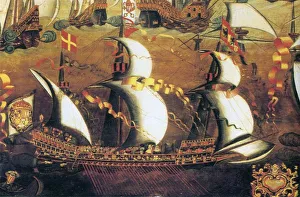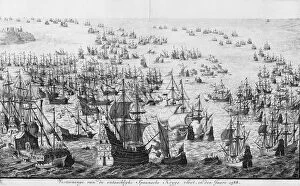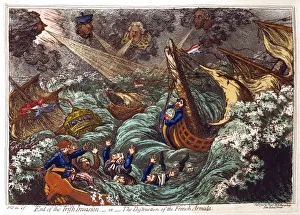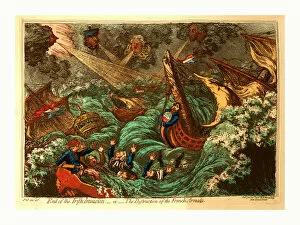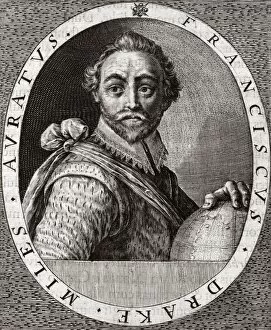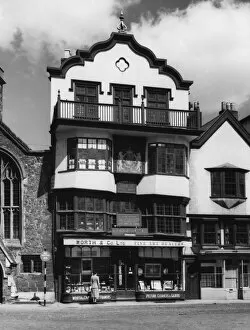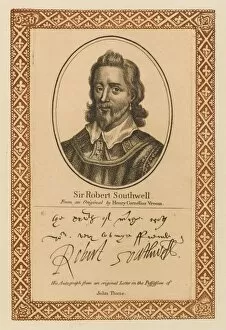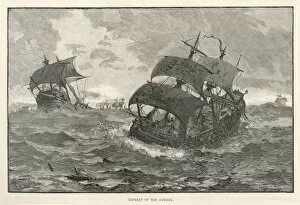Armada Collection (page 7)
"The Armada: A Historic Battle of Power and Resilience" In the year 1588, a formidable sight emerged on the horizon - The Armada in sight
All Professionally Made to Order for Quick Shipping
"The Armada: A Historic Battle of Power and Resilience" In the year 1588, a formidable sight emerged on the horizon - The Armada in sight. Plymouth Hoe stood witness to an event that would forever be etched in history. Captured beautifully by artist John Seymour Lucas in 1880, this painting depicts the grandeur and magnitude of the Spanish Armada. The Spanish Armada, a fleet of mighty ships under the command of Alonso Perez de Guman, 7th Duke of Medina Sidonia, set sail with one goal - to conquer England. However, fate had other plans as they faced fierce resistance from English forces led by Sir Francis Drake. One such momentous clash is captured vividly in "Spanish Armada - Golden Lion attacks Santa Ana. " It portrays a gripping battle scene where two naval powerhouses collide amidst raging waves and billowing smoke. But it was not just brute force that turned the tide against Spain. Another artwork titled "Drake Plays Bowls" reveals how strategic brilliance played its part too. Sir Francis Drake famously engaged in a game of bowls at Plymouth Hoe while awaiting news about enemy movements – showcasing his calmness under pressure. Despite their initial advantage, defeat loomed over the Spanish Armada as depicted in multiple artworks like "Spanish Armada Defeated" and "The Last of the Spanish Armada. " These paintings capture moments when victory slipped through their fingers due to unfavorable weather conditions and relentless English resistance. One particular masterpiece by Cornelis Claesz van Wieringen showcases an intense scene with ships during the Spanish Armada off England's coast around 1620-1625. The tumultuous sea serves as a backdrop for this epic confrontation between nations. Amongst these historical events stands out Ark Royal – Elizabethan Naval ship – symbolizing England's naval prowess during this era. This majestic vessel played a crucial role in defending against Spain's onslaught and became a symbol of hope and resilience for the English people.



